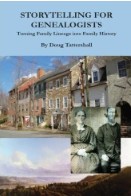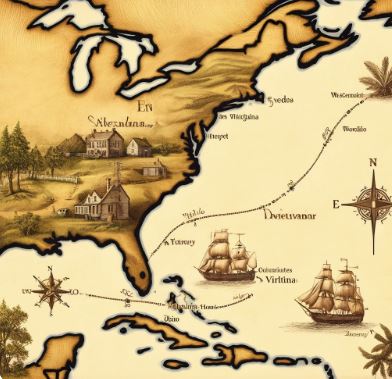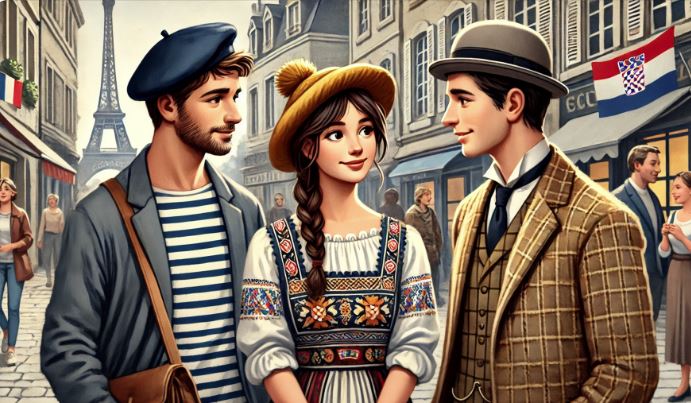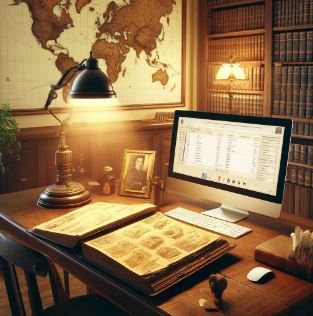
The weather hasn’t yet cooled and I’m not complaining but it is officially fall.
Before I get back to writing my next and final (hooray!) family genealogy book on our Great British lines I decided I had to practice what I preach and take care of some pressing tech tasks that I have put off for way too long. The first was really bothering me as it was boring and there are so many more interesting things to do in genealogy then preserve photos.
Long ago, in 2002, a world that was radically different then today, my cell phone saved all of my photos to a desktop program called Picassa that Google later purchased. I used that product until 2018 when Google rolled it into Google Photos. That’s when my problems began.
When Picassa ceased to exist it lost some of my photos, years 2002, 2007, 2010, and 2019. I wasn’t worried about 2002 & 2007 as my kids were still in school and I was still scrapbooking so I have those photos. I digitized the scrapbooks so we were good. 2010 & 2019, not so much. Sure, other family members probably have some of the photos but I always was the main photographer so much of that is lost. I know, it could be a lot worse but still, not happy about it.
The next issue was with the rollover, some of my photos were doubled and even tripled. New photos were created from group shots – just the heads of whatever the tech decided to select. Then it began creating memory albums. Now that doesn’t sound bad but it became a problem because it used up space and Google, tying all their products together, kept reminding me I needed to purchase additional space from them or I could no longer have a functioning email.
Occassionally, I’d go into photos and delete some of the duplicates and albums but they just would pop back up. On my to-do list was to remove ALL of my Google photos, store them in Dropbox, and back them up to a standalone hard drive. BORING. but. necessary.
For Valentine’s Day, one of my kids gave me a picture frame where you can store and see changing photos. This gave me the impetus to get the photos out of Google. Next week I’ll print the detailed directions on how you can do that fairly quickly and easily, meaning not saving one photo at a time which I initially was doing.
I also realized that I needed to synch my Ancestry.com tree as it’s been awhile since I did that. I no longer use RootsMagic and since I last synched, I got a new desktop so I didn’t have Family Tree Maker downloaded to it. Now FTM has come out with their update (in May 2025 but it’s called 2024, go figure). I somehow missed the promotions but they have one remaining, half price for current license members so I took advantage of it ($40 instead of $80). I decided if I was going to save Dropbox to the stand alone drive I might was well include my Ancestry tree since I’ve just blogged about how I was working at updating it. Yes, it’s still a work in progress but I’d rather save what I have as I’ll never be done with it.
Next up was to delete everything on my stand alone drive as it was all old and not relevant so I turned it back to factory settings. Took hours!
Meanwhile, one of our adult kids had their credit card stolen and the thieves, being really stupid – (Jose Lopez – I am calling you stupid!) bought items in their own name and then had it sent to our kids’ address. (Now you see why I am calling Jose stupid – really, does he want to get caught? Don’t even need a forensic genealogist for that one.)
Jose or whoever was the original thief, was fairly smart at the beginning. Only purchased from stores the kid always uses so for the first two weeks the scam wasn’t noticed. Then, boldness hit and the thief began using it for large sums at stores never used by the kid. By the time it was noticed thousands of dollars of items had been purchased but thankfully, some get to be returned to the companies since they arrived at the kid’s house. (Jose, did you think you were then going to be a porch pirate, too?) Kid called the credit card company for a dispute and the police to file a report in case Jose was local and was going to be paying a home visit. Cop informed us that a local woman got taken for $499,000 the previous week because they also stole her social security number and took out loans. What a nightmare!
That made me realize it was time for me to update some of my own financial practices.
- You may have some items on recurring charges. We’ve decided to use a separate card for those because it’s a major pain to have to contact those vendors to change an account if your card is shut down.
- Since the card was stolen locally (we know this for reasons I’m not disclosing so the guilty can get their due, too bad, Jose, that bed you bought won’t get you a good night’s sleep in jail because it’s already been returned) we decided to use one card just for local purchases. It’s a card with a good reputation to notice fraud quickly so we won’t have to dispute lots of charges when (not if) it get’s compromised.
- We’ll use another reputable card for online only purchases.
If you’re thinking, that’s a back up for a back up and yes it is, just like we do to save our genealogy data. This led me to realize it’s been awhile since I updated my passwords so I spent time doing that as well.
Last task I haven’t completed but is equally important, albeit BORING, is saving many of my emails. Lots of them contain genealogical info and I want to make sure the info is saved to the correct ancestor’s file in Dropbox. That’s my next project and by then, well, it’ll probably be time to redo the cycle.
With the colder weather u perhaps coming next week this is a gentle reminder, dear reader, to take a look at your items to do and start plugging away at them.









